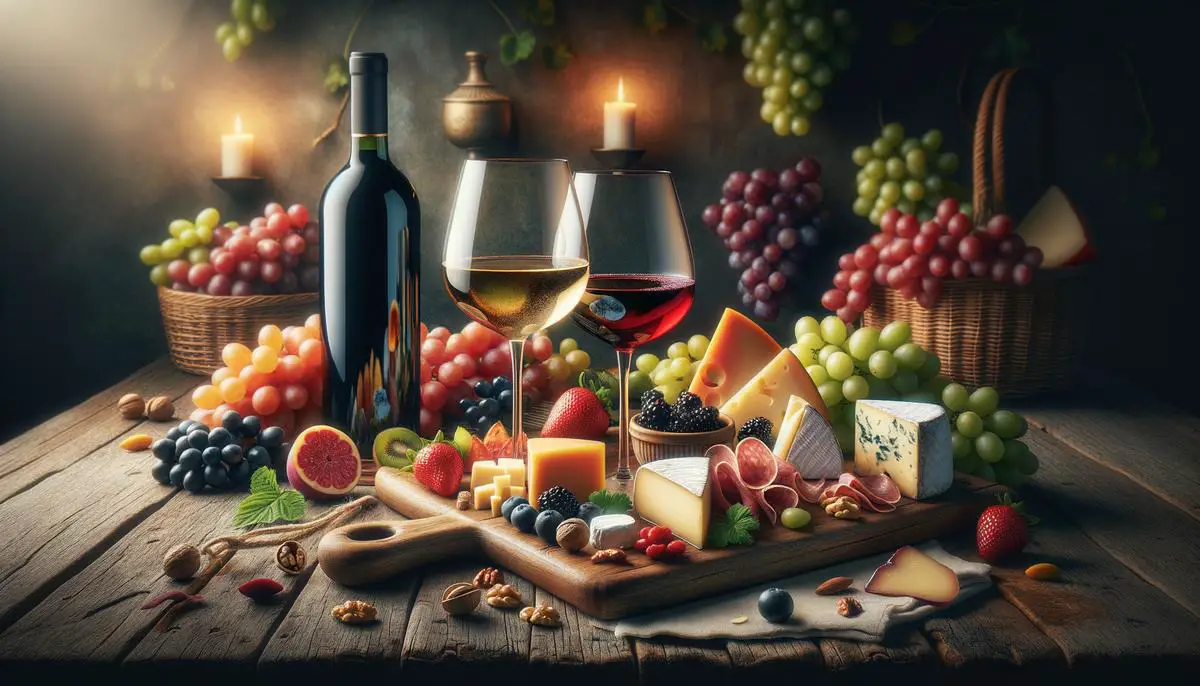Basic Principles of Pairing
Matching the wine's body with the food's weight is key to ensuring neither overpowers the other. A heavy, robust wine like a Cabernet Sauvignon pairs well with a juicy steak, while a lighter Pinot Grigio is better suited for a delicate seafood dish.
Acidity in wine is another important factor when pairing with food. Wines with higher acidity can brighten up fatty and rich dishes, cutting through the richness and cleansing your palate with each sip. For example, the crisp acidity of a Sauvignon Blanc complements a creamy pasta sauce or a plate of oysters.
Tannins, found in red wines, also play a role in food pairing. They create a dry, puckering sensation in the mouth, which can be softened by proteins in meat. This is why a tannic red wine like a Barolo is often recommended with red meat.
Contrasting flavors can also create appealing pairings. Sweet wines contrast nicely with salty foods, such as the classic pairing of Stilton cheese with Port wine. The salty cheese and sweet, fruity wine create a balanced experience.
When pairing wine with food, consider the weight of both the wine and food, the acidity of the wine, and how it could complement or contrast with your dish's flavors. Experiment to find pairings that suit your taste preferences.
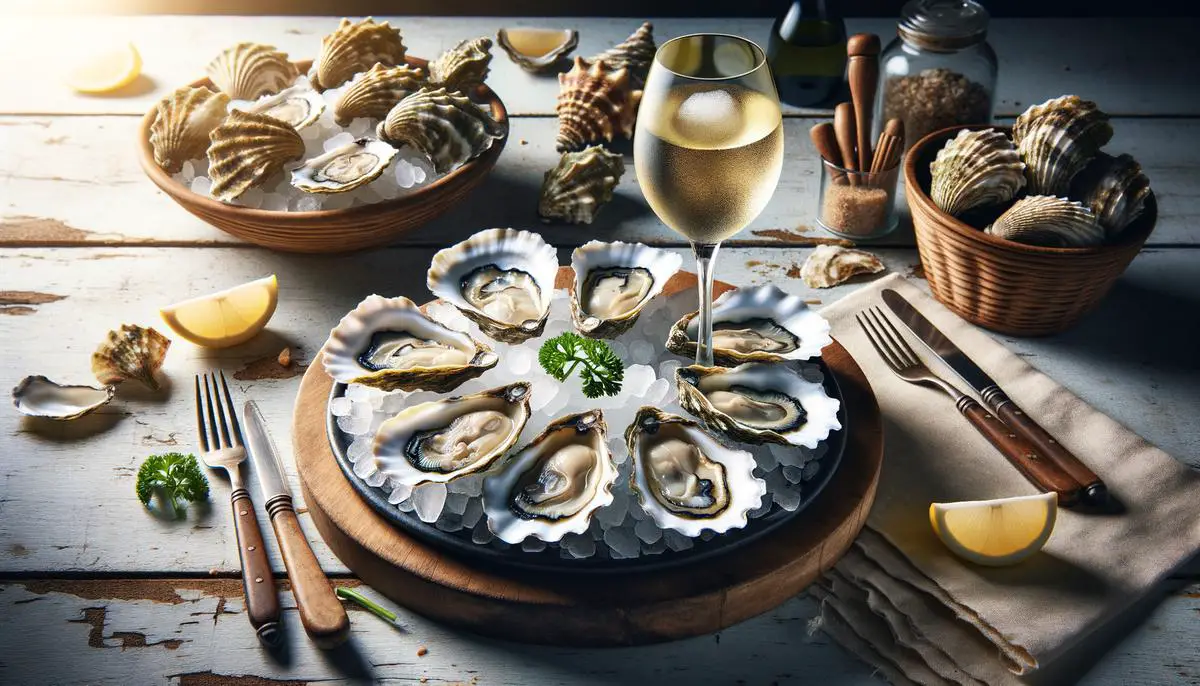
Pairing Wine with Cheese
Pairing wine with cheese is an art that involves understanding the characteristics of both to create harmonious or intriguingly contrasting combinations.
Soft cheeses like Brie and Camembert, with their creamy textures and mild flavors, pair well with light-bodied white wines. A crisp Chardonnay or sparkling Champagne cuts through the richness of the cheese, offering a refreshing contrast.
Harder cheeses, such as Cheddar or Gouda, have firmer textures and more pronounced flavors. They pair well with medium-bodied wines like Merlot or oaky Chardonnay, which can match the strength of the cheese and bring out its nutty and sweet notes.
Aged cheeses present a deeper complexity, with crystalline textures and concentrated flavors. They pair well with full-bodied wines like Cabernet Sauvignon or bold Zinfandel. The wine's ripe tannins soften against the cheese's intensity, creating a striking harmony.
Blue cheeses, with their bold mold veining and assertive flavors, pair well with sweet wines like Port or Sauternes. The sharp and salty character of Roquefort or Gorgonzola plays well against the sweetness of these wines, creating a lush and balanced taste sensation.
These classic pairings are just a starting point. Keep an open mind when exploring wine and cheese pairings, as unexpected combinations can sometimes yield delightful results. The ultimate pairing is one that enhances your dining experience and brings you joy.
Wine with International Cuisines
Pairing wine with international cuisines involves understanding the dominant flavors, spices, and preparation methods of each cuisine. Similar principles apply, but adaptability is key.
Italian cuisine, with its emphasis on garlic, basil, and tomatoes, pairs well with wines that can stand up to their lively character. A pasta dish with marinara sauce finds a good match in a vivacious Chianti, while a creamy Alfredo sauce pairs well with the subtle elegance of a Pinot Grigio.
Indian cuisine introduces a complex array of spices, such as turmeric, cumin, and cardamom. Spice-laden curries and tandoori dishes call for aromatic wines like Gewürztraminer or Riesling, whose flirtatious sweetness and bold bouquet complement the heat and spices.
Japanese cuisine, characterized by delicate flavors and precise preparation methods, pairs well with clean and crisp wines like Sauvignon Blanc or dry Riesling. These wines reflect the essence of Japanese cuisine—elegance in simplicity.
Heartier cuisines, such as the rich stews and grilled meats of Latin American countries, demand wines that echo their robustness. Malbec, with its deep fruitiness and smoky finish, is an excellent companion to Argentinian asado.
These classic pairings offer a starting point, but personal exploration and experimentation are key. The fusion of wine with international cuisines is an art form influenced by taste preferences, occasion, and company. As we become global citizens at the dining table, our wine choices can transport us to distant lands or bring the world into our homes.
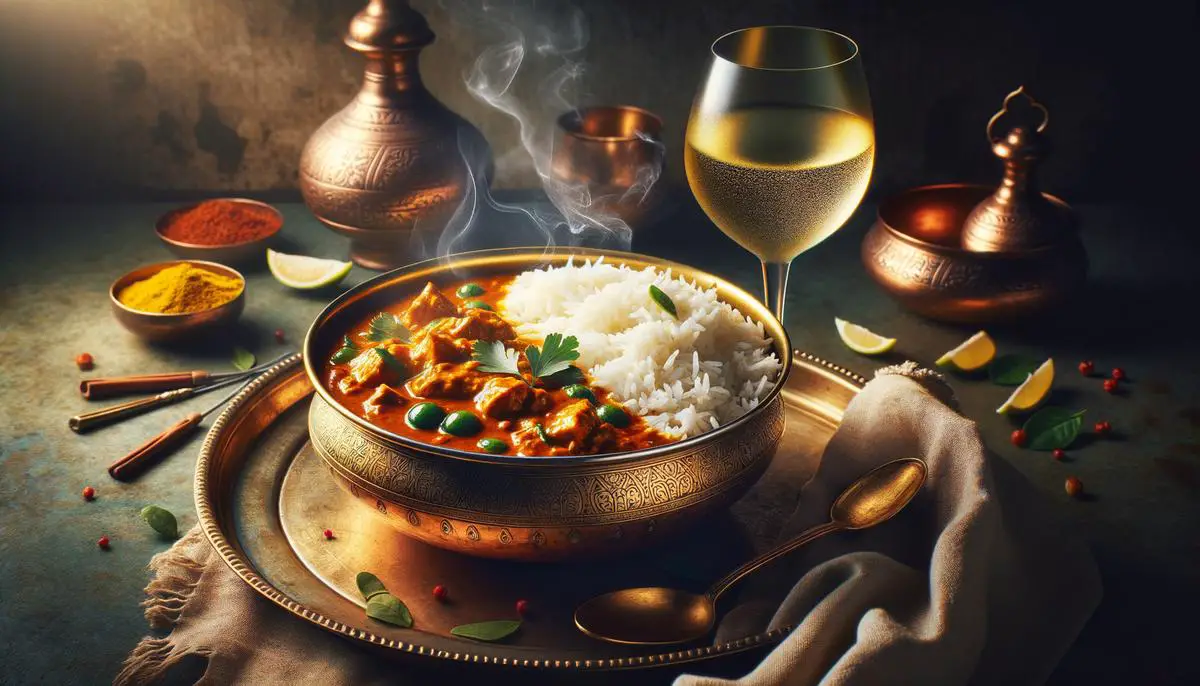
Seasonal Pairings
Pairing wine with the bounty of each season is a reminder of nature's influence on our dining tables. The rhythm of the year brings a shift in available produce and our culinary desires, nudging us towards wines that complement the essence of each season.
In spring, when tender vegetables and the first fruits of the year appear, light, mineral-driven wines like Sauvignon Blanc or unoaked Chardonnay capture the season's freshness. They pair well with dishes like asparagus quiche or strawberry spinach salad.
Summer brings peak ripeness of tomatoes, juicy peaches, and herb-laden dishes. The joyful exuberance of a Rosé or light-bodied Zinfandel complements summer's flavors perfectly. A chilled glass of Rosé with a plate of heirloom tomatoes drizzled in olive oil is a quintessential summer pairing.
Autumn's arrival brings squash, pumpkins, and root vegetables, signaling a return to heartier fare. Pinot Noir and Merlot, with a bit more body, echo the deeper, more complex flavors of autumn harvests. A silky Pinot Noir can beautifully accentuate a mushroom risotto or butternut squash soup.
Winter calls for sustenance of a robust nature, with stews, roasts, and hearty pastas dominating. Bold Cabernet Sauvignon and peppery Syrah rise to the occasion. A glass of opulent Cabernet alongside a slow-cooked beef stew is a defiant stand against the cold outside.
Seasonal pairing is a celebration of time and place, an embrace of what is fleeting yet recurring. It reminds us to live in the moment while looking forward to the pleasures the next season will bring to our table.
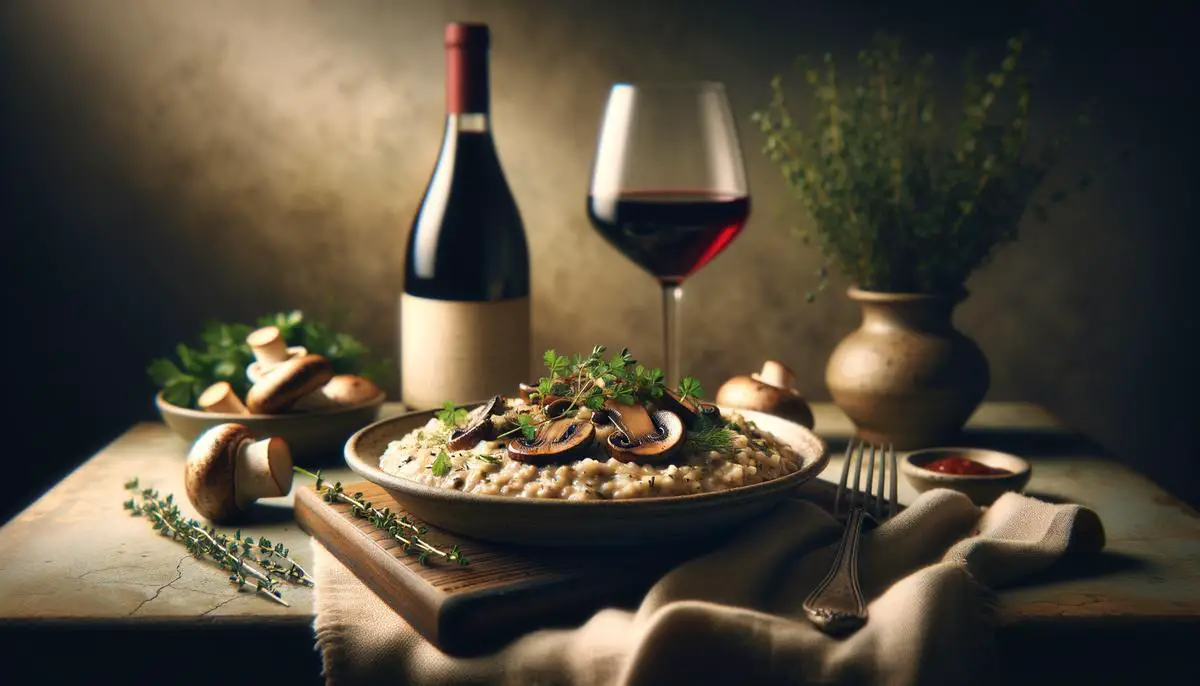
Pairing Wine with Desserts
Pairing wine with desserts requires finesse, understanding, and a keen sense of balance. The secret lies in matching the dessert's sweetness level with the wine, ensuring that one does not eclipse the other.
For chocolate desserts, the richness and bitterness of cocoa can be a dominant force. A Ruby Port, with its bold fruitiness and inherent sweetness, can stand up to chocolate's richness. Likewise, a Banyuls, with its deep notes of coffee and dried fruit, marries well with the luxuriousness of chocolate.
Fruit-based desserts, with their refreshing acidity and vibrant flavors, invite a different set of considerations. A Riesling, particularly those in the Spätlese category with their balanced sweetness and razor-sharp acidity, can embrace the tangy profile of a lemon tart or the succulence of a peach cobbler. For more tropical fruit dishes, consider a Demi-Sec Champagne or a sparkling Moscato d'Asti.
Creamy sweets and puddings demand a wine that won't be overshadowed by the dessert's richness yet will cleanse the palate between spoonfuls. Late-harvest wines, such as a late-harvest Chenin Blanc or a Vouvray Moelleux, provide a refreshing counterpoint to the creaminess of panna cotta, crème brûlée, or vanilla bean cheesecake.
The elegance of pairing wine with desserts lives in the interplay of sweetness, acidity, richness, and texture. While guidelines can navigate the sea of possibilities, personal preference and experimentation lead to truly exceptional pairings. The final chord of the meal—dessert and wine—should resonate with harmony, echoing the joy of the occasion and the care in its curation.
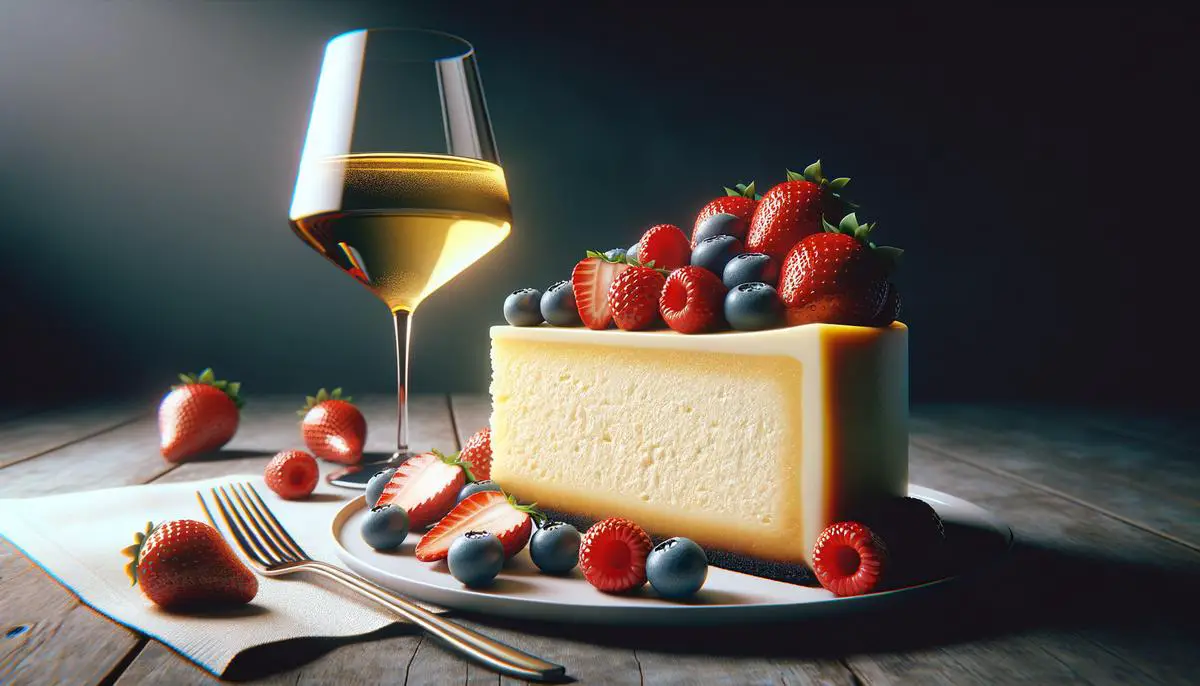
In the end, the essence of pairing wine with food transcends the boundaries of rules and guidelines. It's about creating moments that bring joy and elevate the meal to an experience. The perfect pairing is one that resonates with your taste, making each sip and bite a testament to the pleasures of dining well.
- Harrington RJ. Food and Wine Pairing: A Sensory Experience. New York: John Wiley & Sons; 2007.
- Robinson J, ed. The Oxford Companion to Wine. 4th ed. Oxford: Oxford University Press; 2015.
- Goldstein E. Perfect Pairings: A Master Sommelier's Practical Advice for Partnering Wine with Food. Berkeley: University of California Press; 2006.
